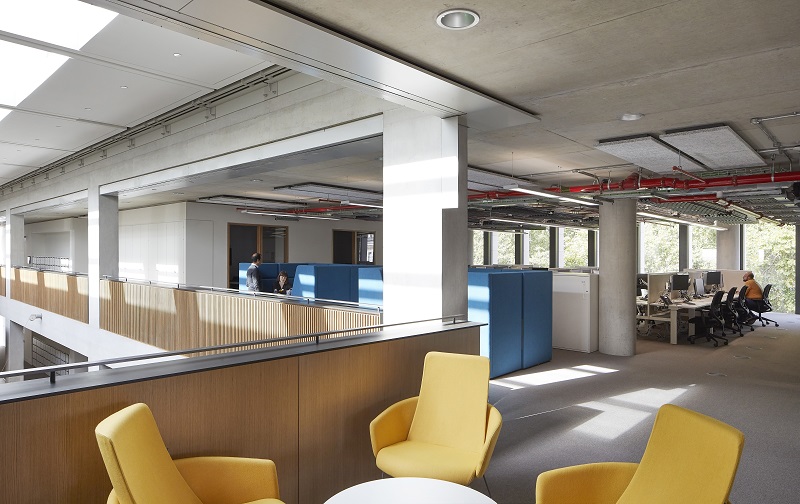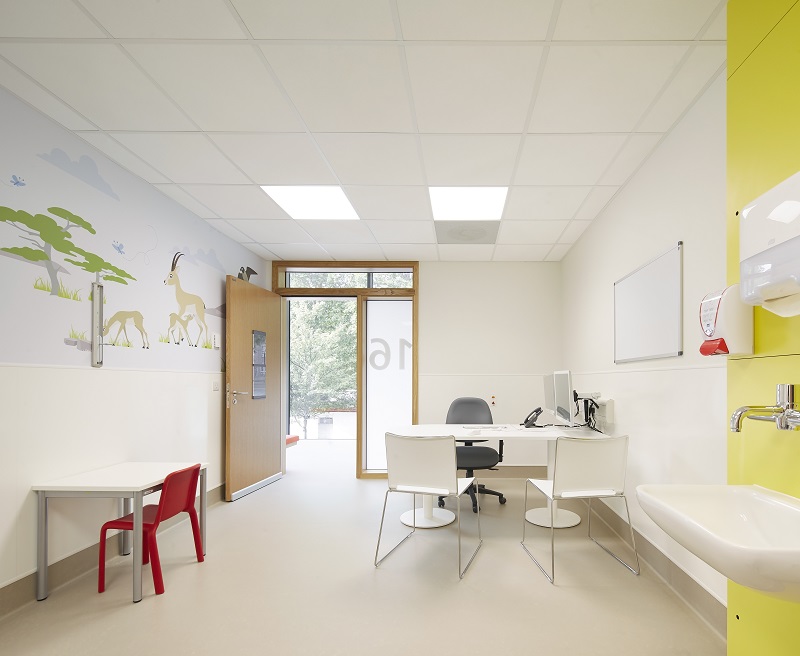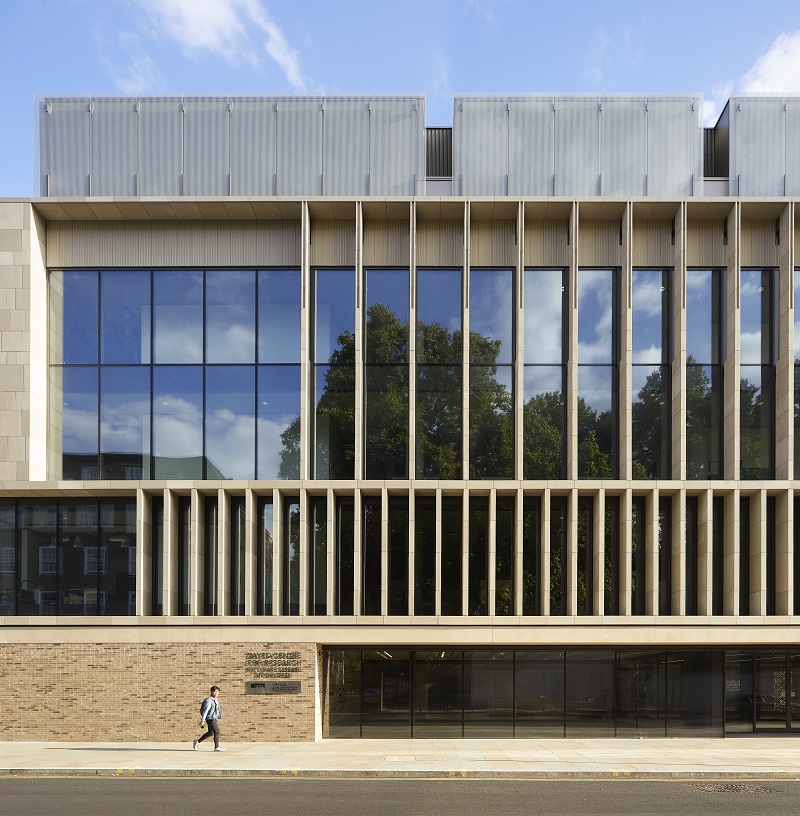Stirling Prize-winning design practice, Stanton Williams, has completed the new Zayed Centre for Research into Rare Disease in Children.
The building is a partnership between Great Ormond Street Hospital NHS Foundation Trust, University College London, and Great Ormond Street Hospital Children’s Charity.
The prominent 13,000sq m purpose-built facility in central London brings 500 researchers and clinical staff under one roof for the first time.
Working together, they will partner in producing pioneering research and translating it into innovative treatments and cures for children with rare and complex diseases.
The public-facing research facility in the heart of London’s Knowledge Quarter was conceived as a holistic space where science, city and human lives come together.
Inside, it is organised around two connected ‘hearts’; an outpatient zone and a research zone, each planned as layered volumes around a daylit atrium.
Across eight storeys the building provides academic research workspace, seminar and meeting spaces, specialist laboratories, and outpatient clinics for children and young people.
At the base of the building is a 600sq m, double-height principal laboratory, visible from all sides, as well as from the street outside.
A shared single entrance bridge, which passes above these laboratories, welcomes research staff and patients, drawing them into a central atrium, flooded with light.
And a transparent ground floor gives visibility and prominence to the activities inside the laboratories, while carefully-articulated terracotta fins and glazing address and reflect the nearby Coram’s Fields and the changing sky - expressing the civic significance of this ground-breaking institution.

The centre will focus on pioneering research and translating it into treatments and cures for complex childhood illnesses
Inside, a sense of openness and generosity helps to dampen the feeling of being inside a clinical environment.
Encounters with ‘non-clinical’ surfaces, such as exposed concrete and European oak, create a calm and dignified environment for young patients and their families.
In addition, an significant art programme co-ordinated by GOSH Arts, responds to the design of the building and supports the aspiration to develop a space that facilitates chance encounters and exchanges between researchers and clinicians.
“The opportunity to work with Great Ormond Street Hospital, UCL and GOSH Charity to make a building that was about science and medical care in the heart of the city on such a public and symbolic site opposite Coram’s Fields seemed very powerful,” said Gavin Henderson, principal director at Stanton Williams.
“We felt very strongly that we wanted to give public visibility to science and allow people in the public realm to understand what the building was about and give a sense of the life-changing activities taking place inside.”
Matthew Shaw, chief executive at Great Ormond Street Hospital for Children NHS Foundation Trust (GOSH), added: “I am delighted to see this world-leading facility open its doors and welcome patients for the very first time.
“The opportunities that the Zayed Centre for Research offers for the integration of technology with cutting-edge medical research, and the collaboration we’ll see between research and clinical teams working side by side, is incredibly exciting.

Artwork is a major part of the design, helping to soften the clinical spaces
“As I walk around the new facility, it is clear the potential it holds to change the lives of children with the rarest and most-complex diseases, and the hope it will offer to their families.”
Designed to high energy-efficiency standards, the Zayed Centre for Research has achieved BREEAM ‘Excellent’ sustainability certification and is intended to produce 35% less carbon emissions than required under the Building Regulations.
The development team also included Pell Frischmann (Structural Engineering and Traffic Consultant); Hoare Lea (Mechanical, Electrical, Public Health, Fire, Lighting and Acoustics); Bradley Hole-Schoenaich Landscape Architects (Landscaping); Eckersley O’Callaghan (Façade Consultant); MJ Medical (Healthcare Planning and ADB Consultant) Gardiner & Theobald (Quantity Surveyor); Skanska (Main Contractor).

Huge expanses of glass and the use of concrete and European oak help to create a calm and restful environment for patients and their families
